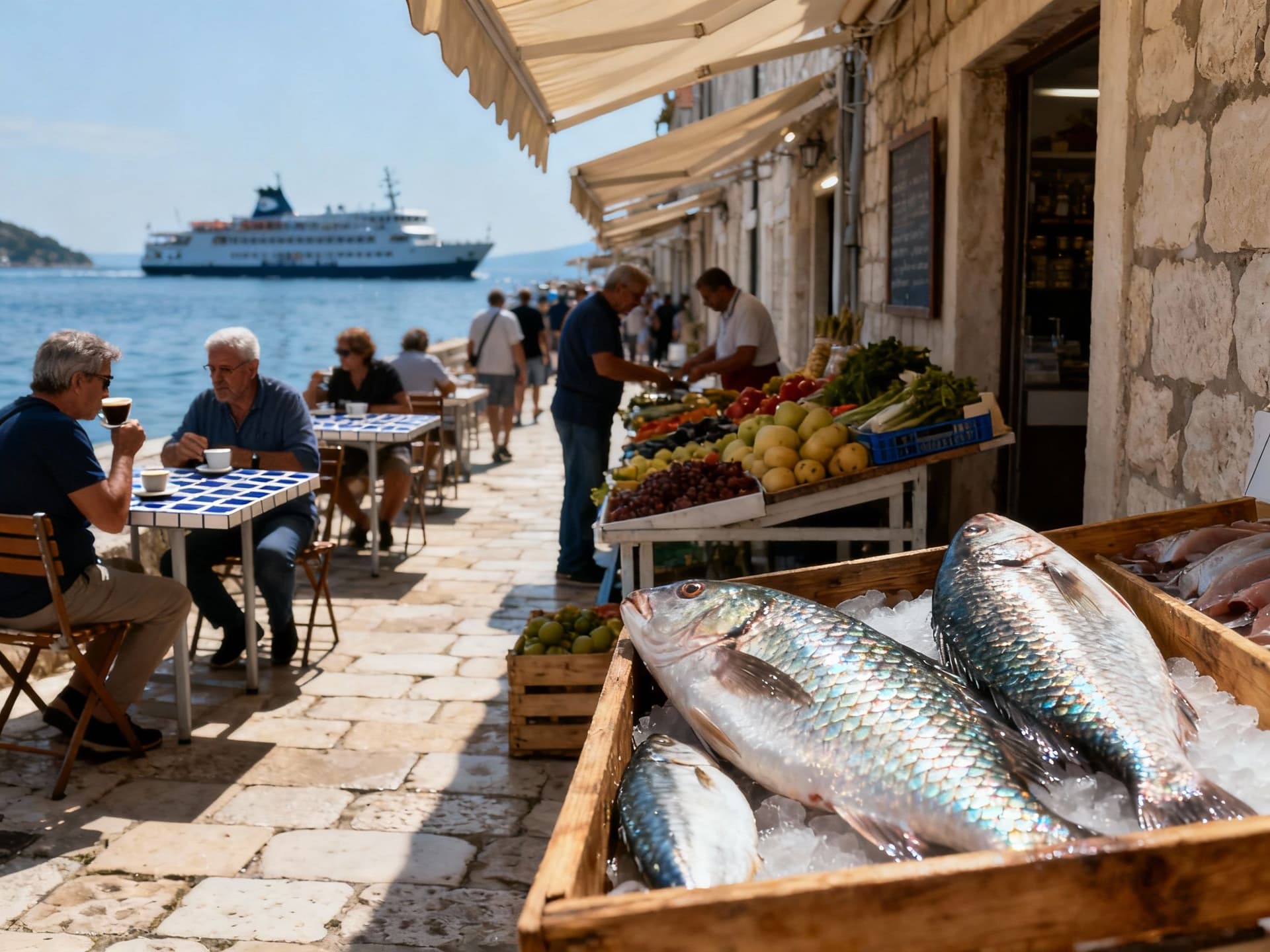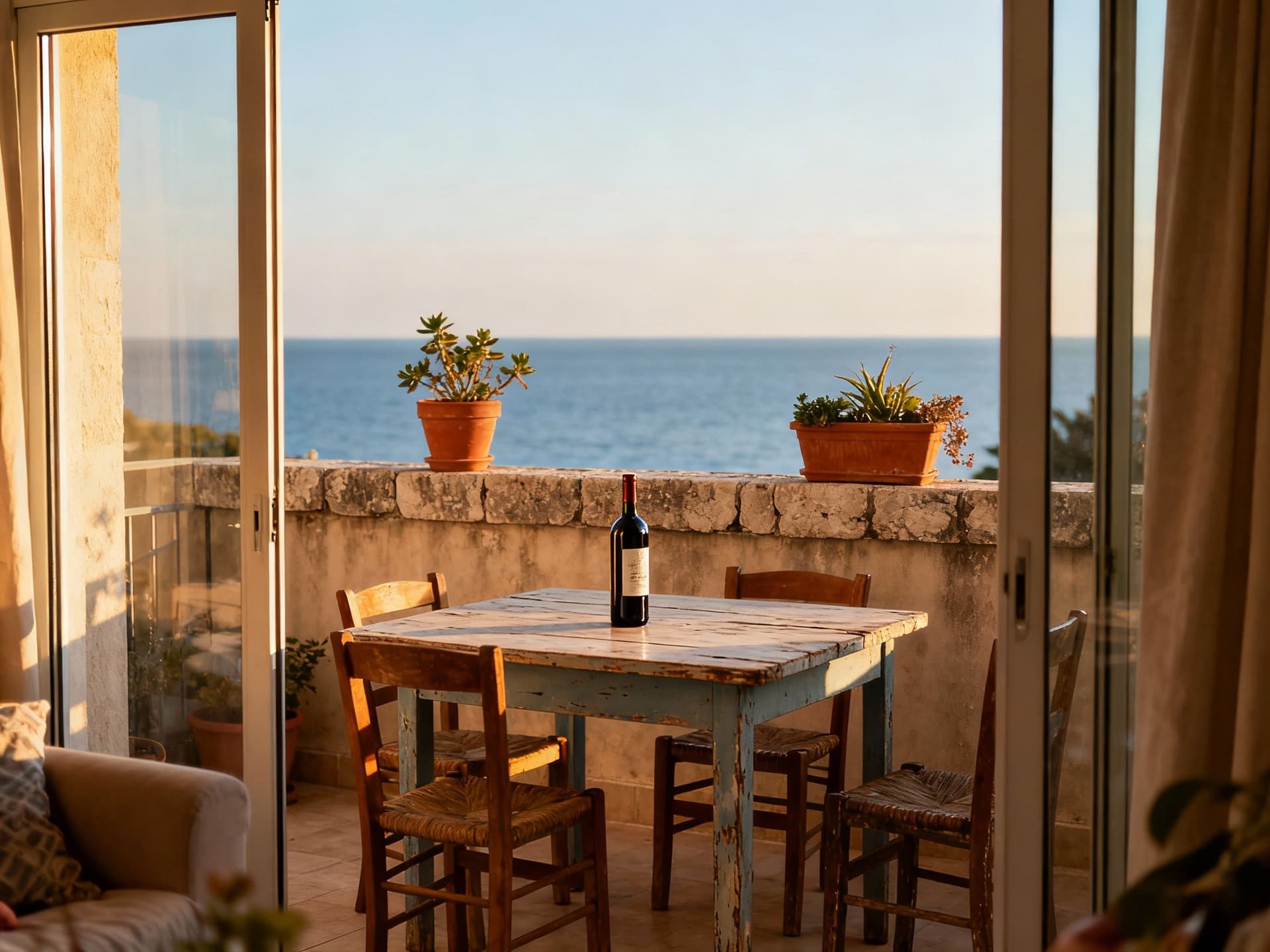When Croatia’s Summer Illusion Masks Investment Risk
Croatia’s postcard summers hide concentrated market risks. Use seasonality and policy stress tests to see how yields move and choose mixed‑demand locations for stable returns.
Imagine sitting at a small table outside Cafe Uliks on Split's Riva, sea breeze carrying the smell of grilled fish and espresso, while a short‑term rental sign glints on the balcony across the square. That postcard scene is Croatia — sunlit, cast‑iron, and endlessly photographed. But the market beneath the postcard is weathered by seasonality, regulatory turns and sharp location premiums. This guide looks beyond summer romance to map the risks that quietly shape returns and sensitivity for international buyers.
Living the Croatia lifestyle — what you actually buy into

Daily life in Croatia blends Adriatic coast rituals and continental cadence. Summers pulse along the Dalmatian coast — Split, Hvar, Dubrovnik — while Zagreb hums with year‑round cultural life. Recent government data show tourism growth outside peak months, but the bulk of overnight stays remains coastal, concentrating rental demand and price pressure in a handful of towns. That concentration creates predictable yield drivers and equally predictable sensitivity to season and policy.
Dalmatian coast: concentrated demand, seasonal peaks
Picture Dubrovnik's city walls filling in summer while quieting dramatically by November. The coast captures most of Croatia's 108 million overnight stays, inflating short‑term rental cashflows in high season but producing vacancy and price sensitivity off‑season. This uneven rhythm means cap rates on coastlines can look attractive on paper during July–August, then wobble when occupancy falls.
Zagreb & continental Croatia: steadier year‑round demand
Zagreb and inland towns show more stable monthly occupancy thanks to business travel, conferences and domestic tourism. For investors prioritising reliable long‑term rental income over peak summer yields, these markets reduce sensitivity to seasonality and regulatory shifts tied to coastal short‑letting.
Making the move: risk scenarios that change returns

Risk is not one thing in Croatia — it’s the overlap of seasonality, policy and local supply scarcity. A single regulatory change to short‑term rental tax or a 10–20% correction in coastal demand can slash effective yields. Recent proposals to reassign tax burdens to property owners and to discourage short lets make scenario planning essential. Use stress tests that model occupancy, tax, and price shocks simultaneously.
Scenario 1 — summer shock: occupancy drop of 30%
If occupancy in peak months drops 30% (weather, flight cuts, or macro shocks), gross short‑term rental income can fall 20–40% for coastal assets. For an investor with a 5% gross yield assumption, that shock can reduce realised net yield to near breakeven after property management and maintenance. Stress test: model 20% and 40% summer drops and compare to a stable year‑round leasing scenario.
Scenario 2 — regulatory reclassification of short lets
Policy aimed at discouraging short‑term rentals — for example higher property levies or exemptions for long‑term leases — directly compresses short‑let revenue or raises holding costs. If a new per‑sqm charge of €1–€8 is enacted (as proposed), calculate its impact on net yield and IRR: small per‑sqm fees matter most for low‑margin, high‑turnover coastal flats.
Insider tactics: sensitivity checks every buyer should run
Adopt a simple, repeatable sensitivity framework: vary occupancy, average daily rate (ADR), and holding costs independently and together. Use three scenarios — base, downside (–25% ADR, –30% occupancy), and policy shock (+€X/sqm tax) — then report implied net yields and payback years. Coastal prime can see price per m² exceed €3,300; inland bargains often halve that figure, shifting risk profile substantially.
Step-by-step sensitivity checklist
1. Establish baseline: current price/m², expected ADR and occupancy (monthly). 2. Apply a 30% summer occupancy shock and recompute annual revenue. 3. Add proposed per‑sqm property tax to annual costs. 4. Recalculate net yield and IRR. 5. Compare to a long‑let scenario and to inland alternatives.
Practical levers to reduce sensitivity
• Target mixed‑use towns (Split suburbs, Zadar hinterland) with both tourist and local demand. • Prioritise properties with adaptable layouts that convert from short‑let to long‑let easily. • Negotiate management contracts with revenue‑share floors. • Factor in renovation budgets: a well‑executed renovation can raise ADR more than local price inflation. • Consider building-level amenities that support year‑round tenancy (heating, co‑working space, storage).
What expats wish they'd known: cultural and on‑the‑ground realities
Beyond numbers, everyday living shapes investment returns. Buyers underestimate bureaucracy timelines, the importance of local utility readiness, and the micro‑market quirks of streets like Dubrovnik's Ploče or Split's Meje. Language barriers slow contracts and renovations; local relationships accelerate them. Expat owners who lean on trusted local agencies and lawyers avoid most costly delays.
Integration factors that affect occupancy and resale
Proximity to ferry lines (Bra? connections), municipal development plans, and seasonal services (winter heating, accessible supermarkets off-season) change both livability and tenant appeal. Properties near established markets like Pula's bazaar or Split's Green Market offer steady local footfall that supports long‑term rental demand beyond tourists.
Lifestyle tradeoffs to quantify before buying
• Sea view premium vs. rental volatility. • Historic center charm vs. higher maintenance and stricter renovation rules. • Island living serenity vs. ferry‑dependent occupancy. • New build convenience vs. coastal scarcity premium and developer margins.
Conclusion: Croatia offers a lifestyle many fall in love with — the markets reflect that desire. But love is not an investment strategy. Run explicit sensitivity tests for seasonality, tax shifts and price concentration; prioritise mixed‑demand locations if you need stable yields; and work with local experts who understand municipal rules and seasonal demand patterns. If you pair the Adriatic's romance with rigorous scenario analysis, you can own both the lifestyle and a defensible financial return.
Dutch investment strategist who built a practice assisting 200+ Dutch clients find Spanish assets, with emphasis on cap rates and due diligence.


